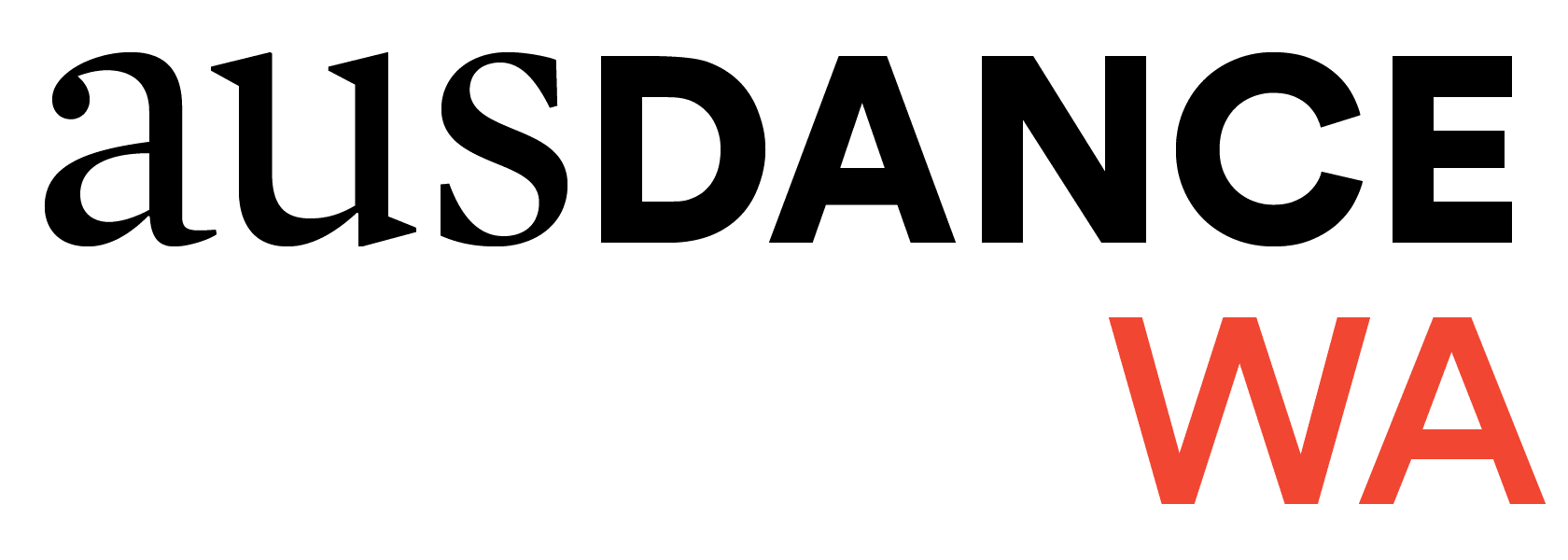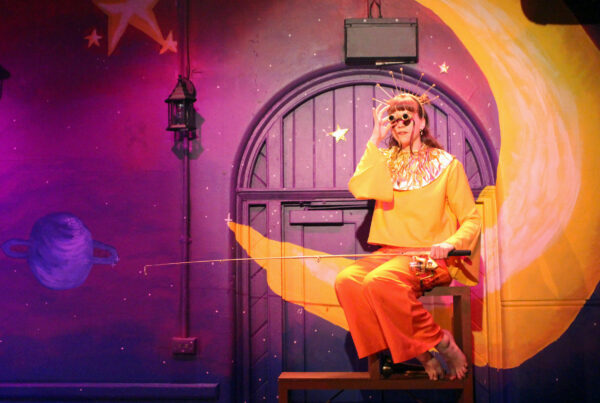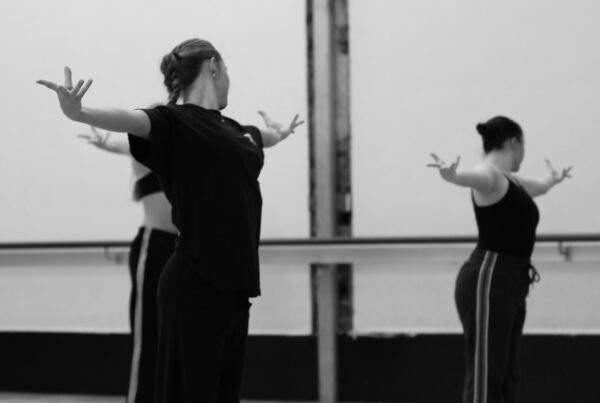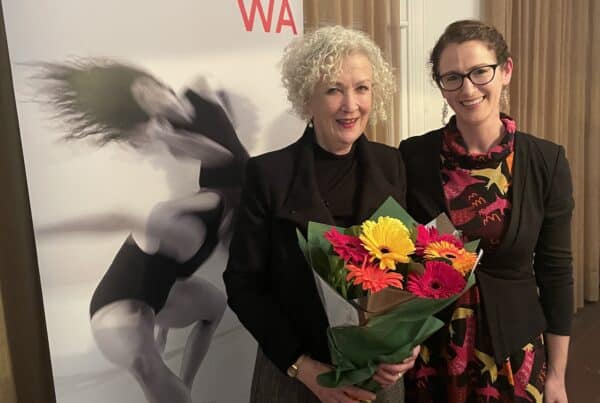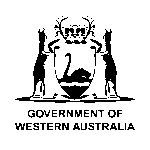By Lindsay Fletcher
From Kalgoorlie to Karratha, and most recently Broome, West Australian Ballet’s regional program is reimagining how ballet connects with communities — and how those communities, in turn, shape ballet.
Since its inception, the program has been guided by a simple but powerful aim: to make dance accessible to everyone, everywhere. “We’re not just performing,” says April Vardy, who is part of the company’s Education and Community Engagement team, and has been leading the program since mid-2023. “We’re engaging. We’re listening. We’re building relationships that go beyond the classroom or the stage.”
Having begun as a Teaching Artist in 2020, before stepping into the role of Project Coordinator and now working as the Regional & Engagement Manager, Vardy knows the program from the ground up.
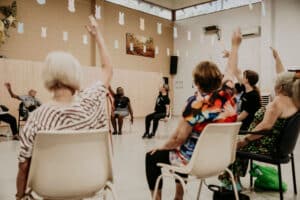 “It’s a privilege to see the impact of these tours firsthand. When you arrive in a community where professional dance opportunities are rare, you realise how much these visits mean — not just to the students, but to teachers, families, and the wider community.”
“It’s a privilege to see the impact of these tours firsthand. When you arrive in a community where professional dance opportunities are rare, you realise how much these visits mean — not just to the students, but to teachers, families, and the wider community.”
Each tour is a carefully woven patchwork of workshops, storytelling sessions, and dance classes tailored to local needs. Programs range from full ballet classes in secondary schools to playful Storytime Adventures for younger audiences and even seated dance workshops designed for inclusivity and accessibility.
“We’re really focused on ensuring everyone has a way to take part. That could mean adapting for physical needs, different age groups, or community priorities. It’s about meeting people where they are.”
Where Funding Meets Footwork
As with most regional arts initiatives, funding is both a foundation and a frontier. West Australian Ballet tours are supported by sponsorships and targeted grants, with corporates typically providing multi-year backing for the company’s Regional Dance Engagement Program hand-in-hand with the local authority in each location.
“The reality is that the places we visit are largely determined by funding. Each year, we submit specific proposals to secure the resources needed to reach these communities. It’s a balance of ambition and practicality.”
The trade-off has been the establishment of some incredibly rich and trusted relationships that have deepened over many years in places like Karratha, Kalgoorlie-Boulder and Port Hedland, where local communities now feel a sense of ownership over program initiatives. In Karratha for example, performances from the locals taking part in West Australian Ballet’s Youth Dance Collective program have become woven into the annual Red Earth Arts Festival.
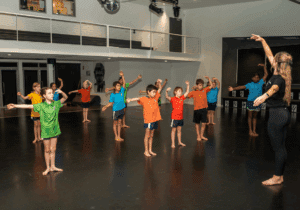 Initiated in 2016, the Regional Dance Engagement Program supports Project 10 (introduced in 2022) a three-day dance and stage management workshop, Youth Dance Collective (YDC), which engages dance students aged 10 to 17, and professionally taught classes for adults, seniors, and masterclasses for talented dance students considering a professional dance career.
Initiated in 2016, the Regional Dance Engagement Program supports Project 10 (introduced in 2022) a three-day dance and stage management workshop, Youth Dance Collective (YDC), which engages dance students aged 10 to 17, and professionally taught classes for adults, seniors, and masterclasses for talented dance students considering a professional dance career.
“The YDCs have been running for about six years now. They offer a chance for regional students to see what’s possible — to connect with a professional company and maybe imagine a path for themselves in dance.”
A Regional Development Fund, established in 2023 and supported by Woodside, has been instrumental in enabling West Australian Ballet to expand the reach, quality and long-term sustainability of its Education and Community Engagement programs by providing a way for the company to trial pilot programs in new locations and build the case for expansion.
One such pilot occurred earlier this year.
Along with Teaching Artists Minni Karamfiles and Bridgette Davies, Vardy visited Broome in June for two weeks to deliver 41 events in a pilot program designed to reconnect with the community (the last time the company visited was 2014), and establish a foundation for the program to grow.
As part of the pilot, the team also engaged with the primary school students at St Mary’s College, ran two residencies at Broome Senior High School and Broome Performing Arts Co-Op, and delivered nine Storytime Adventures within the community, including at Broome Library.
“The reception in Broome was incredible. The teachers, students, and local dance school were so enthusiastic and welcoming. It confirmed what we already knew — that there’s a real hunger for these kinds of experiences in regional WA.”
Breaking the Ballet Stereotype
Perhaps one of the most rewarding aspects of West Australian Ballet’s regional work is seeing perceptions shift. Workshops are designed to be energetic and engaging, often blending classical technique with contemporary music, games, and creative exercises.
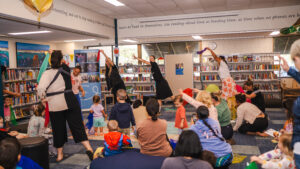 “We use ballet positions as a starter, but the focus is on movement, rhythm, and joy. We want students to walk away thinking, ‘That was fun,’ not ‘That was hard.’”
“We use ballet positions as a starter, but the focus is on movement, rhythm, and joy. We want students to walk away thinking, ‘That was fun,’ not ‘That was hard.’”
It’s this balance of play and precision that has made WAB’s regional programs so successful. They aren’t about perfecting fifth position — they’re about planting a seed of curiosity. Teachers also report greater confidence, enthusiasm, and creativity among students after the visits — and in many cases, a newfound interest in movement and music.
Inclusivity sits at the heart of the program, supported by regular training for the company’s Teaching Artists, with a focus on creating safe and inclusive environments, understanding all students’ needs, and not setting unrealistic expectations.
Disability awareness training ensures that no one is left behind, and that language and approach are always respectful. This commitment extends to cultural inclusion as well. In recent years, West Australian Ballet has placed greater emphasis on ensuring programs are culturally sensitive, especially when engaging with First Nations communities. During their pilot program in Broome, this took the form of a collaboration with Magabala Books and Mystique Dia who runs ‘Bookish Play the Deadly Way’, culminating in a First Nations’ Storytime at the library celebrating culture and community through movement and storytelling.
“We want to make sure that whatever we were doing, we are doing it respectfully, collaboratively, and meaningfully. Inclusivity isn’t an add-on for us, it’s the baseline. Every participant should feel seen, supported, and capable.”
Expanding Horizons
These programs do more than deliver access to the arts; they foster community wellbeing, develop emerging talent, and contribute to long-term cultural infrastructure in regional Western Australia. For many of the students the company meets via these regional programs, these workshops are more than just a school activity — they’re a doorway into an art form they might never have otherwise encountered.
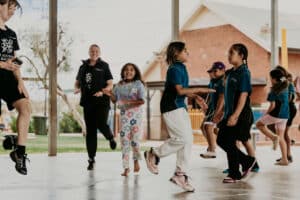 As West Australian Ballet looks to the future, the vision is clear: more connections, more communities, and more opportunities for people to experience the joy of dance.
As West Australian Ballet looks to the future, the vision is clear: more connections, more communities, and more opportunities for people to experience the joy of dance.
“We’re exploring ways to expand into even more remote areas. But it’s not about spreading thin — it’s about doing it well. Every program must be high-quality, inclusive, and responsive.”
Photos by EKC Photography and Queen Tide Creative
